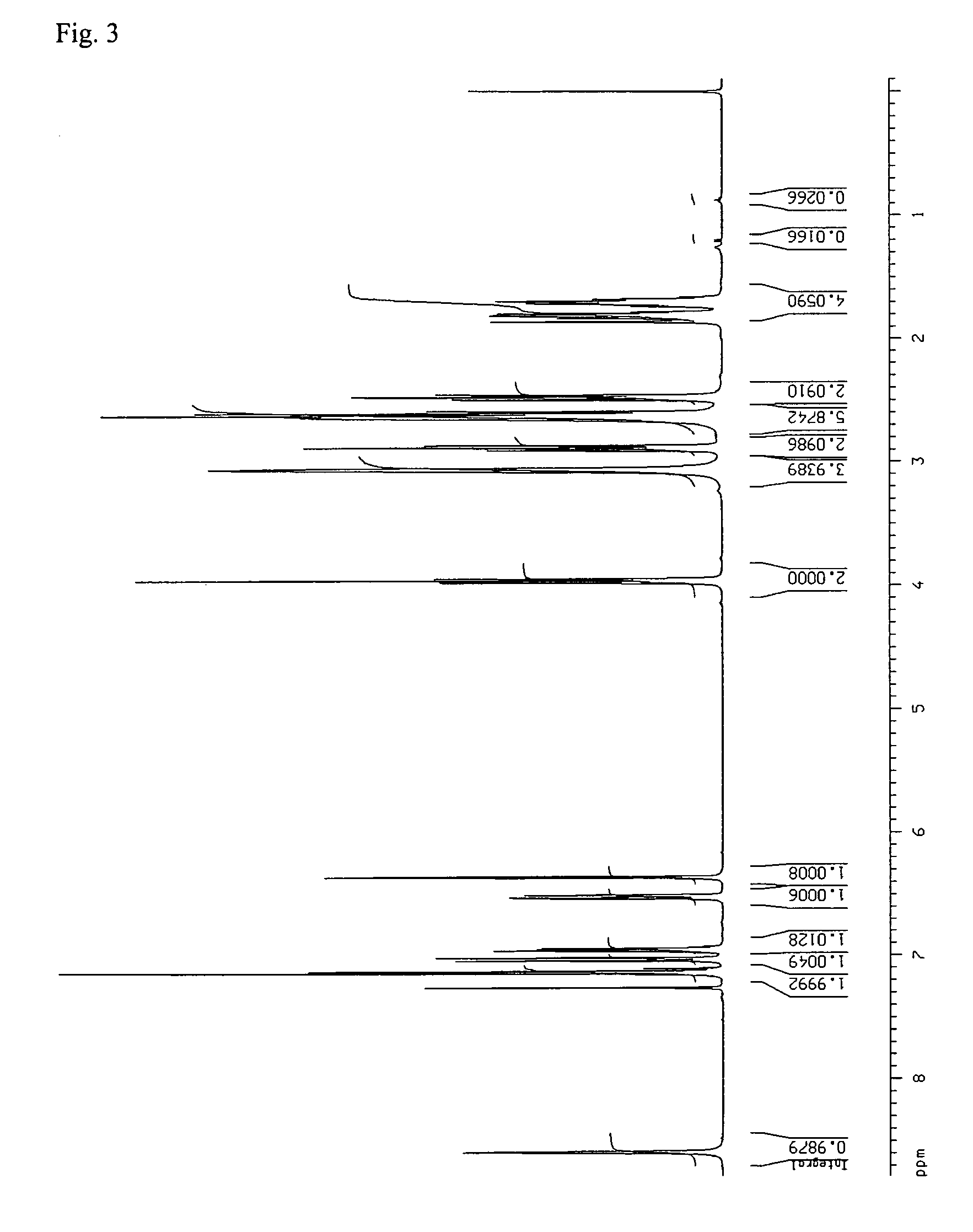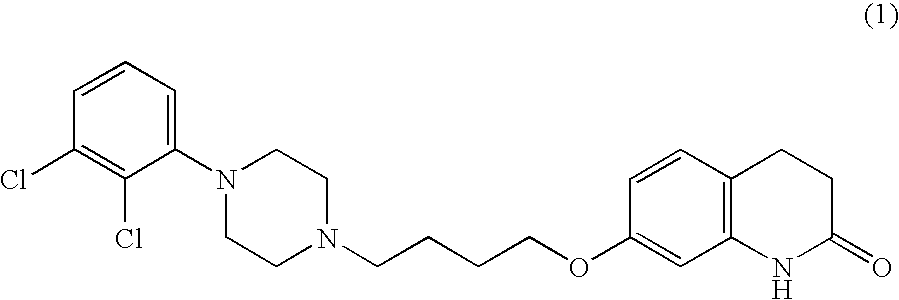Process of making crystalline aripiprazole
a technology of crystalline aripiprazole and aripiprazolium, which is applied in the direction of nervous disorder, organic chemistry, drug compositions, etc., can solve the problems of unsuitable milling, milled substance adhesion to the milling machine, and the inability to mill, etc., to achieve the effect of facilitating industrial processes and avoiding the formation of aripiprazol
- Summary
- Abstract
- Description
- Claims
- Application Information
AI Technical Summary
Benefits of technology
Problems solved by technology
Method used
Image
Examples
example 1
[0045] 1.0 g of aripiprazole was dissolved in 10 ml of ethyl acetate at reflux. To the hot solution, 5-10 mg of Form B aripiprazole was added as seed. Then, the hot solution was allowed to cool to room temperature, during which rapid crystallization occurred. The crystals were isolated by filtration over a P3-glass filter (reduced pressure) and air dried at room temperature for 3 days. White crystals (plates-like / flake-like) with a yield of 800 mg were obtained. [0046] DSC: Single melting peak around 139-141° C. No other thermal effects could be observed. [0047] XRPD:Corresponds to form B. [0048] HSM: Crystal sizes are between 50-500 μm, mostly between 200-300 μm.
example 2
[0049] 1.0 g of aripiprazole was dissolved in 16 ml of 2-propanol at reflux. To the hot solution, 5-10 mg of Form B aripiprazole was added as seed. Then, the hot solution was allowed to cool to room temperature, during which crystallization occurred. Crystallization progressed slower than in Example 1. The crystals were isolated by filtration over a P3-glass filter (reduced pressure) and air dried at room temperature for 3 days. A white, crystalline powder with a yield of 850 mg was obtained. [0050] XRPD: Corresponds to form B. [0051] HSM: Aggregates or agglomerates of thick plates or prisms. Easy to separate crystals of 150 μm or smaller.
example 3
[0052] 2.5 g of aripiprazole and 40 ml of 2-propanol were mixed together. The suspension was stirred and heated to reflux (jacket temperature Tj=90° C.) and maintained at reflux for about 30 minutes. A clear solution was obtained. The solution was slowly cooled to a reaction temperature (Tr) of 25° C. within 1 hour under stirring. At about Tj=39° C. and Tr=41° C., crystallization started. After cooling, the suspension was stirred for an additional 50 minutes at Tr=25° C. Then, the crystals were isolated by filtration over a P3-glass filter (reduced pressure) and air dried overnight at room temperature. A white, crystalline powder with a yield of 2.16 g was obtained. [0053] IR: Form B. [0054] XRPD: Form B, no indications for any other forms. [0055] HSM: agglomerates of rod-like or plate-like crystals. Particle size of the agglomerates is typically between 70-160 μm. When milled, small and irregular crystal fragments are obtained (
PUM
| Property | Measurement | Unit |
|---|---|---|
| temperature | aaaaa | aaaaa |
| temperature | aaaaa | aaaaa |
| particle size | aaaaa | aaaaa |
Abstract
Description
Claims
Application Information
 Login to View More
Login to View More - R&D
- Intellectual Property
- Life Sciences
- Materials
- Tech Scout
- Unparalleled Data Quality
- Higher Quality Content
- 60% Fewer Hallucinations
Browse by: Latest US Patents, China's latest patents, Technical Efficacy Thesaurus, Application Domain, Technology Topic, Popular Technical Reports.
© 2025 PatSnap. All rights reserved.Legal|Privacy policy|Modern Slavery Act Transparency Statement|Sitemap|About US| Contact US: help@patsnap.com



